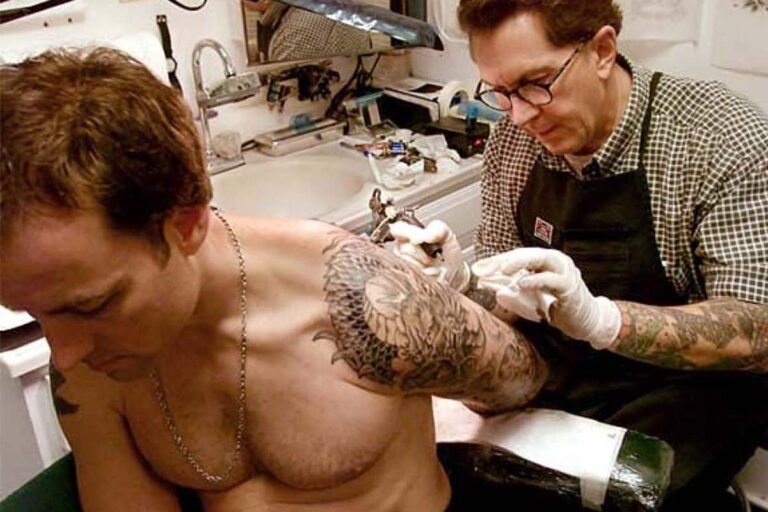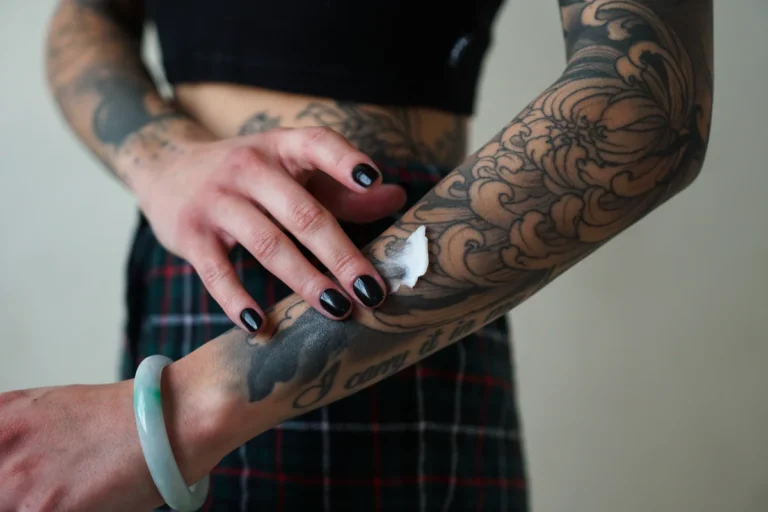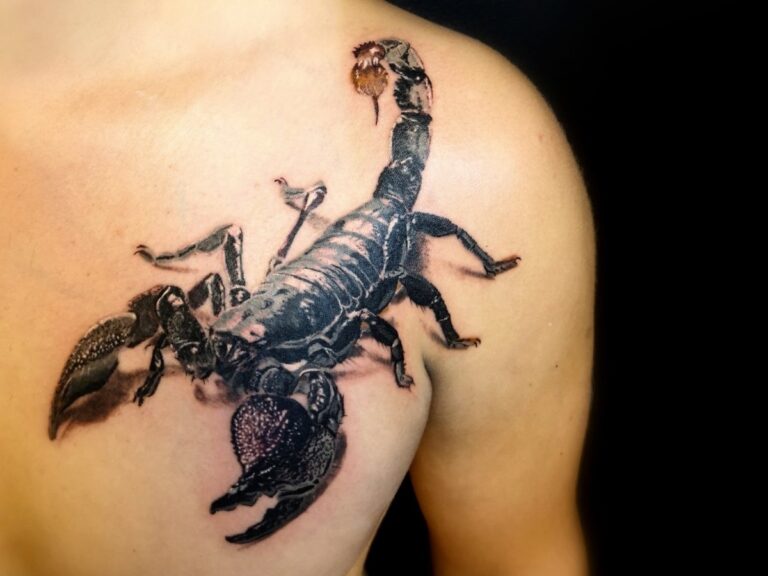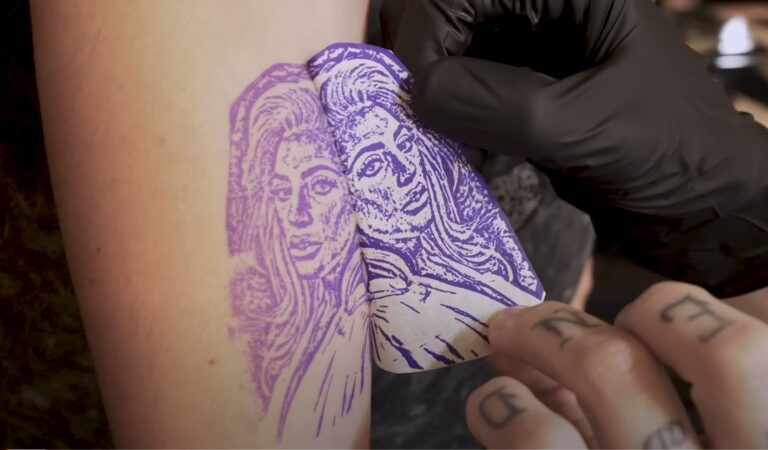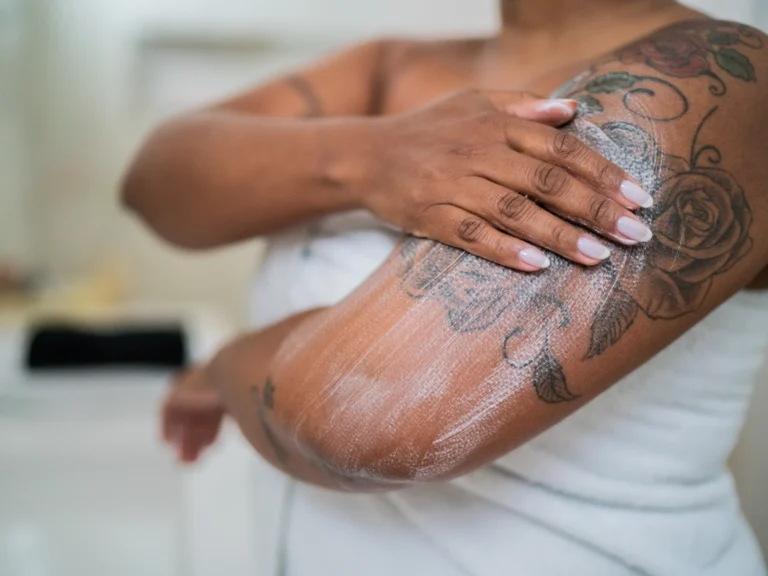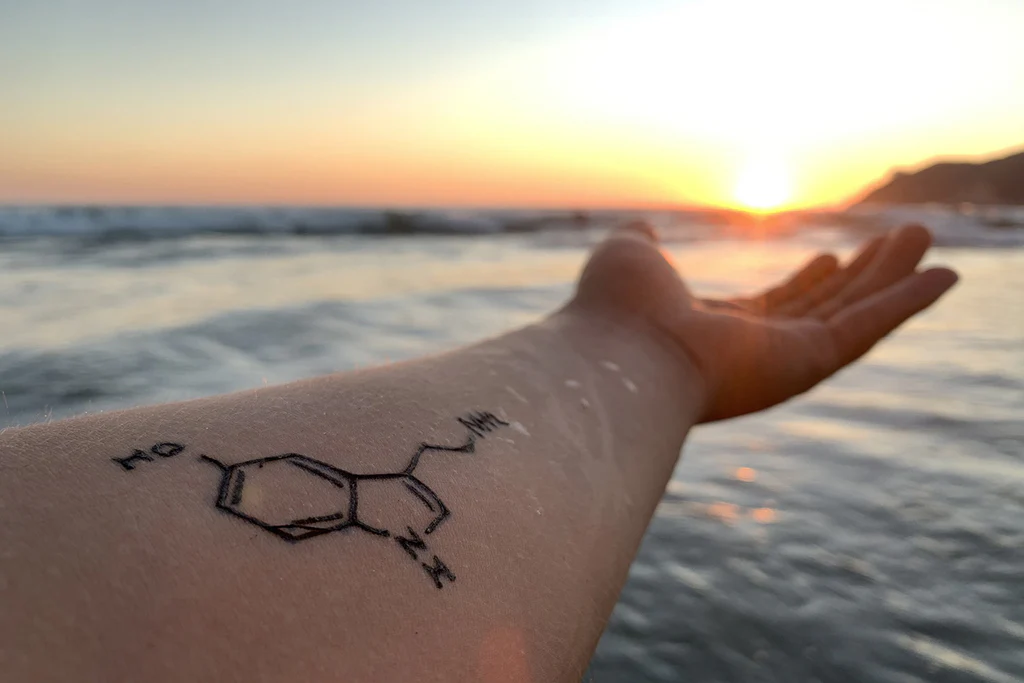Summer is just around the corner, which means more fun in the sun. But those bright rays can be tough on our tattoos if we’re not careful.
Protecting tattoos means they’ll stay super clear for years and years of memories together. And who doesn’t want to show off these beautiful works of art, right?
Let’s check out these top 10 tips for keeping our ink looking good all season long. Our tattoo artists worked hard on their awesome designs, so we wanna take the best care.
10. Avoid Direct Sunlight
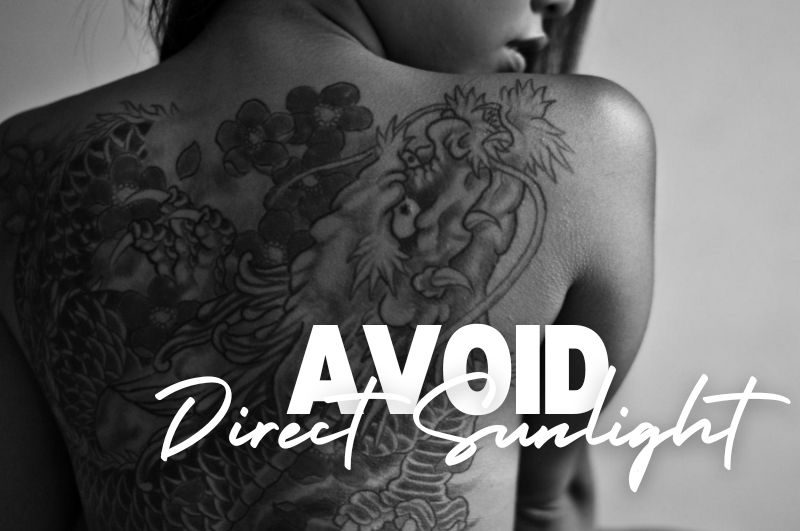
Fresh tattoos are extremely sensitive to UV rays, making it essential to keep them out of direct sunlight. UV exposure can cause severe damage to the delicate, healing skin, leading to issues such as:
- Fading
- Blistering
- Prolonged healing times
It’s best to cover your new tattoo with clothing or bandages whenever you are outside. Even if you are just stepping out for a short period, the sun’s rays can quickly harm your tattoo.
Avoiding direct sunlight not only helps in maintaining the vibrancy and detail of your tattoo but also prevents painful sunburns on the already sensitive area.
Sunlight can cause the ink to break down, which may result in your tattoo appearing dull or blurred over time. Being vigilant about sun exposure, especially in the early days following your tattoo session, is crucial for its long-term appearance and health.
9. Use Sunscreen on Healed Tattoos
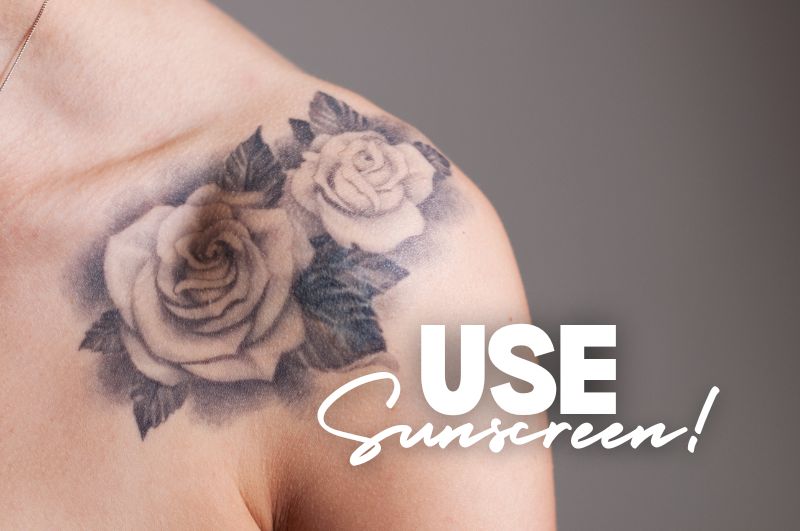
Once your tattoo is fully healed, which usually takes a few weeks to a few months depending on the size and location, applying a high SPF sunscreen becomes essential.
Sunscreen helps protect your tattoo from the damaging effects of UV rays, which can cause fading and discoloration over time.
it’s essential to choose a broad-spectrum sunscreen. This type of sunscreen offers protection against both UVA and UVB rays, which are harmful to the skin and can cause your tattoo to fade or become discolored over time.
- An SPF of at least 30 to ensure adequate protection
- An SPF 30 sunscreen filters out approximately 97% of UVB rays
Apply the sunscreen generously and reapply it every two hours, or more often if you’re in the water or sweating heavily.
It’s important to note that you should avoid applying sunscreen on new or healing tattoos, as it can cause irritation and potentially lead to infection. Instead, keep new tattoos covered and out of the sun until they are fully healed.
8. Stay in the Shade

Opting for shady areas when you are outside is a simple yet effective way to protect your tattoo from sun damage. Using umbrellas, canopies, or other shade structures can provide additional protection when natural shade is unavailable.
It is especially important during the peak sun hours between 10 AM and 4 PM when UV rays are strongest.
Staying in the shade not only helps keep your tattoo vibrant but also protects your skin from other harmful effects of sun exposure, such as sunburns and skin cancer.
If you know you’ll be outside for extended periods, plan to wear protective clothing or bring portable shade devices like umbrellas.
7. Wear Protective Clothing
Wearing protective clothing is one of the most effective ways to shield your tattoo from the sun, especially when it’s fresh. Clothing with UV protection is highly recommended, as it can block harmful rays more effectively than regular fabrics.
Look for items specifically designed with UPF (Ultraviolet Protection Factor) ratings, which indicate the level of UV radiation they block. Hats, long sleeves, and pants made from UV-protective fabrics can provide excellent coverage. Loose-fitting clothing is preferable for new tattoos to prevent friction and irritation.
Tight clothing can rub against the healing tattoo, causing discomfort and potentially damaging the ink. Even after your tattoo has healed, continuing to wear protective clothing can help maintain its color and detail over time.
Investing in high-quality UV-protective garments is a wise choice for anyone looking to preserve the beauty and integrity of their tattoos.
6. Be Aware of Your Tattoo’s Age

Understanding the age of your tattoo is crucial in determining how much protection it needs from the sun.
New tattoos are particularly vulnerable and require extra care to avoid sun exposure, as UV rays can hinder the healing process and cause significant damage.
During the first few weeks, keep your new tattoo covered and avoid direct sunlight as much as possible.
As your tattoo ages and becomes fully healed, it still needs protection to maintain its vibrancy. Prolonged exposure to the sun can cause even older tattoos to fade and lose their detail.
5. Avoid Tanning Beds

Tanning beds emit intense UV rays that can be extremely harmful to tattoos.
The concentrated UV radiation can cause significant damage to the ink, leading to fading and blurring of the tattoo’s details. Tanning beds increase the risk of skin cancer and other skin-related issues.
If you have a new tattoo, it’s especially important to avoid tanning beds, as the intense UV exposure can severely impact the healing process, causing scarring and discoloration.
Even for older tattoos, tanning beds pose a threat to the longevity and appearance of your ink.
The best approach is to avoid tanning beds altogether and opt for safer alternatives like self-tanning lotions or sprays if you desire a tan.
Protecting your tattoo from the intense UV rays of tanning beds is crucial for maintaining its color and clarity, as well as safeguarding your overall skin health.
4. Clear Your Schedule for New Tattoos

Planning your tattoo sessions around your schedule is essential to ensure proper healing.
If you have a vacation or an event that involves a lot of sun exposure, it’s best to schedule your tattoo appointment well in advance or after the event.
New tattoos need ample healing time before being exposed to the sun, typically around 2 to 4 weeks for the initial healing phase.
During this time, you should avoid prolonged sun exposure and activities that could lead to excessive sweating or water exposure, such as swimming.
Clearing your schedule allows you to focus on proper aftercare, which includes keeping the tattoo clean, moisturized, and protected from the sun.
3. Keep Hydrated
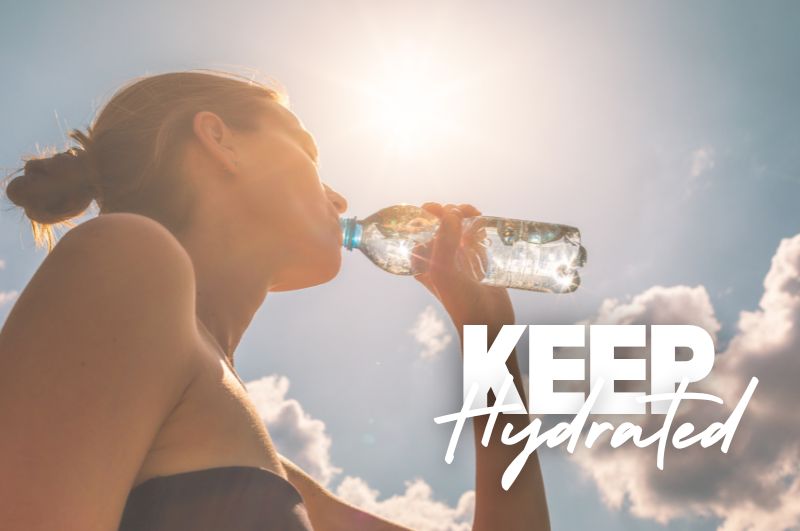
Keeping your skin hydrated is crucial for both the healing process of a new tattoo and the overall health of your skin.
Hydrated skin heals more efficiently and is less prone to issues such as peeling and scabbing, which can affect the appearance of your tattoo.
Drinking plenty of water throughout the day helps maintain your skin’s moisture levels from within, promoting better healing and healthier-looking skin.
Using moisturizers specifically designed for tattoo care can keep your tattooed skin hydrated and prevent it from becoming dry and irritated.
Look for products that are fragrance-free and formulated with ingredients that support skin healing.
2. Use Tattoo-Specific Sun Protection Products
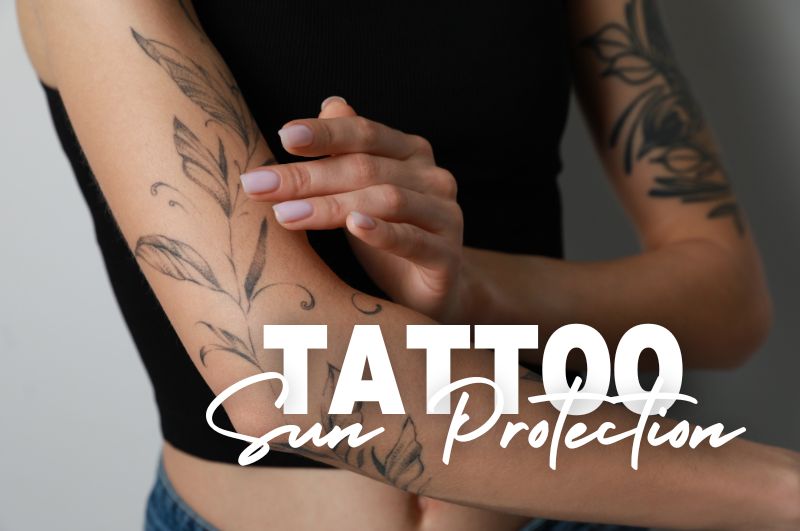
Investing in tattoo-specific sun protection products can provide enhanced care for your ink.
These products are formulated to protect tattoos from UV rays while preserving the vibrancy and integrity of the ink.
Sunscreens, sprays, and lotions designed for tattoos often contain ingredients that not only block harmful UV rays but also nourish the skin and prevent fading.
When selecting a product, ensure it has a high SPF rating and offers broad-spectrum protection.
Some tattoo-specific sunscreens also include ingredients that help enhance the brightness of your tattoo, keeping it looking fresh and vivid.
These products are usually tested to be safe for tattoos and the environment.
1. Listen to Your Tattoo Artist
Your tattoo artist is an expert in aftercare, so it’s crucial to follow their advice.
Each artist has its methods for ensuring your new tattoo heals properly, and their instructions are tailored to your specific tattoo and skin type.
Typically, these instructions will include steps for cleaning your tattoo, applying ointment, and covering it with a bandage.
By adhering to these guidelines, you can prevent infections and other complications that might arise during the healing process.
Your artist might also suggest specific products that they know work well. Their experience and expertise are invaluable, and their primary goal is to ensure your tattoo looks great and heals well.
Ignoring their advice could lead to poor healing, which might require touch-ups or even medical attention.
Listening to your tattoo artist and following their aftercare instructions diligently is the first and most crucial step in protecting your tattoo from the sun and other potential hazards.
Related Posts:
- Long-Term Tattoo Care Tips - How To Keep Your Ink Vibrant
- 7 Signs Your Skin Got Infected Because of Tattoo
- Top 15 Unique Minimalistic Tattoo Ideas for Your Next Ink
- 34 Best Watercolor Tattoo Designs - Find Your Style!
- How To Choose the Right Animal Motif Tattoo for Your…
- Color Tattoos - Everything You Need To Know


